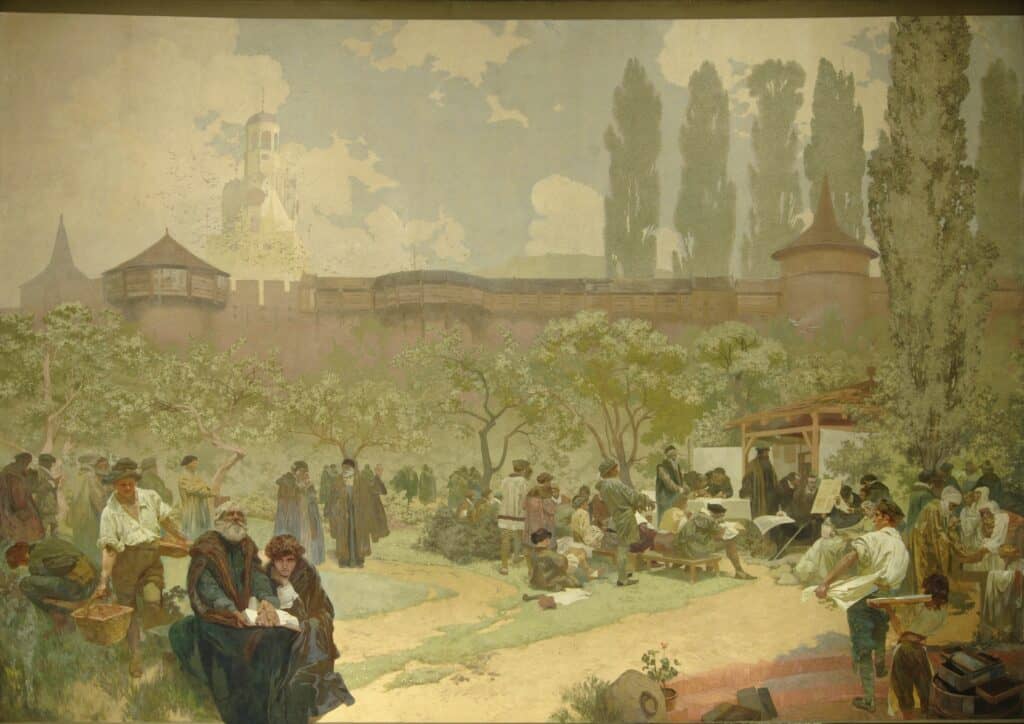The Cradle of the Royal Bible
The Unity of the Brethren was a religious community that emerged at the beginning of the second half of the 15th century out of resistance to the corruption and evils of the Roman and Utraquist Church. Under the influence of humanism, it changed its originally austere view of education, and its schools were among the best in Bohemia during this period.
Mucha presents his birthplace Ivančice, with its town walls and church tower as they were in the 16th century. One of the most famous fraternal schools was the aristocratic law school in Ivančice. It was generously supported by the then lord of Rosice and Náměšt' nad Oslavou, Charles the Elder of Žerotín. It was taught by distinguished people, among them the highly educated Přerovian Jan Blahoslav, who translated the New Testament from Greek into Czech. This translation has been called the pearl of Czech literature. A printing house was set up at the Brethren congregation in Ivančice, where the Bible began to be printed. In 1578, the printing house was moved to the Romanesque fortress in nearby Kralice, thanks to which this copy of the Bible is called the Kralice Bible.
The painting shows the teaching of the Brothers' school in the countryside in a place that is still called Ve Sboru. Classes are interrupted because Charles the Elder of Žerotín visited the school. He is sitting under the shelter on the right looking at copies of the Bible. His second wife is resting nearby. We know that she was ill all her life, which is reflected in her face. On the right edge of the canvas is a printing press. To the blind man sitting on the left, a young man in the likeness of Alphonse Mucha reads from the Bible for comfort. The sunny autumn, rich in its fruits, is a symbol of the fertile and abundant time that comes after the scorching summer of the Hussite wars. The rooks circling around the tower of the church in Ivančice are about to take flight, indicating that the members of the Unity of the Brethren will soon have a long journey ahead of them. After the Battle of the White Mountain (1620), many of them left their homes for their faith and sought refuge abroad.
Vita App/gnews.cz-Jana Černá_07
https://mk-epopej-pruvodce.netlify.app/dospely/15



